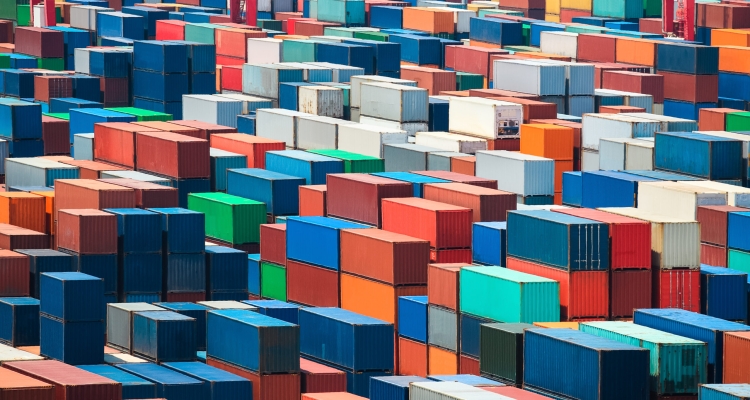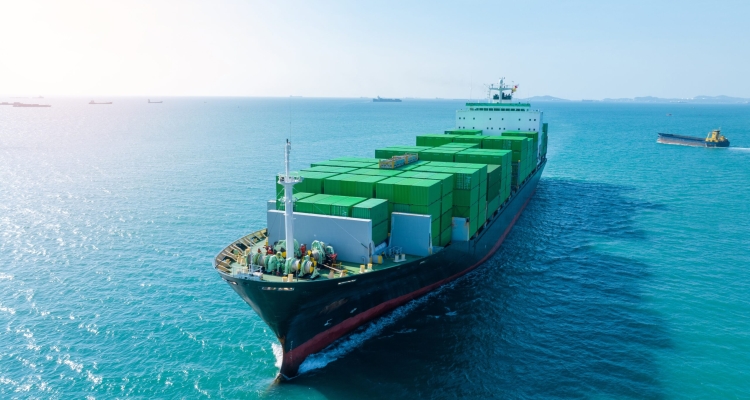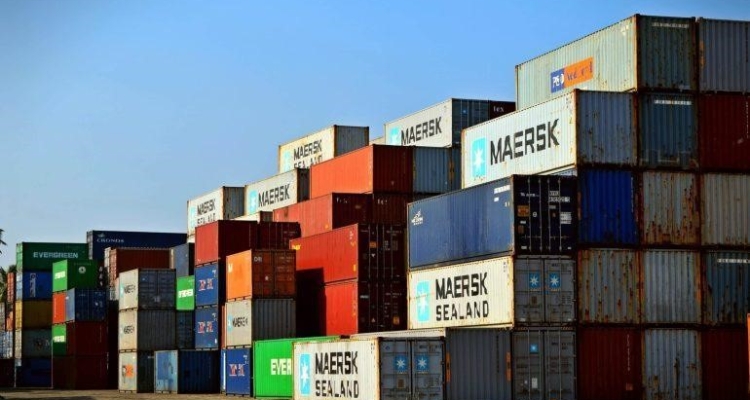Five trends that will reshape shipping in 2025
As 2025 approaches, the shipping industry will usher in a wave of change influenced by political, environmental and technological forces. These shifts will not only impact businesses, but also global supply chains and consumer markets. Also read: Shipping industry faces tough choices under new FuelEU maritime regulations Here are five key trends we predict will shape the shipping landscape in 2025… #1 The rise of America First means greater uncertainty The resurgence of America First policies promises to reshape the shipping and packaging industries in significant ways. The proposed tariffs of up to 20% on all imported goods and up to 60% on goods from China are aimed at boosting domestic production and reducing dependence on foreign suppliers. However, for businesses that rely on foreign suppliers, these tariffs will increase the complexity of cost management and logistics, as companies respond to these changes by importing in advance. The rush to comply with tariff deadlines can lead to bottlenecks at warehouses…
Hapag-Lloyd invests US$4 billion in 24 dual-fuel ships
German shipping giant Hapag-Lloyd has committed to investing US$4 billion to order 24 new dual-fuel container ships from China's Yangtze River Shipbuilding Group and New Era Shipbuilding Co., Ltd. The fleet upgrade is planned to be delivered from 2027 to 2029, which will increase the shipping capacity by 312,000 TEU. In terms of Yangzijiang Shipbuilding, it has 16,800 TEU ships, and New Era Shipbuilding has 9,200 TEU ships. Also read: Environmental groups push to decarbonize shipping to fight pollution The advanced vessels will be aligned with Hapag-Lloyd’s Strategy 2030 and feature dual-fuel engines capable of running on biomethane, which is expected to reduce CO2 emissions by up to 95%. Additionally, the ships are designed to be ammonia-ready, demonstrating the company’s commitment to sustainable shipping and carbon neutrality. CEO Rolf Habben Jansen noted: "A more efficient fleet will strengthen our competitive position and enable us to provide high-quality global services." With $3 billion in long-term financing, this fleet update and the…
IMO chief urges action against Houthis Red Sea attack
Armed men stand on the beach on December 5, 2023, as the Galaxy Leader merchant ship, which was seized by Yemen's Houthi rebels last month, is anchored off the coast of Salif, Yemen. Reuters/Khaled Abdullah As the Houthi armed maritime threat continues to escalate, International Maritime Organization (IMO) Secretary-General Arsenio Dominguez concluded a diplomatic visit to major Red Sea countries. The crisis began with the hijacking of the MV Galaxy Leader in November 2023 and has now been the subject of more than a hundred drone and missile attacks on ships in the region, severely affecting global trade and seafarer safety. The attacks, reportedly triggered by the ongoing Israel-Hamas conflict, have resulted in four deaths, two sinkings and extensive ship damage, prompting many shipping lines to reroute around the Cape of Good Hope, a costly and time-consuming route detour route. Also read: Houthi attack latest: East-West trade braces for rising freight costs in 2024 Dominguez, whose diplomatic mission includes high-level…
Panama Canal net profit $3.45 billion
The Panama Canal posted a 9.5% profit increase in the fiscal year to September 2024, generating revenue of $3.45 billion, despite a severe drought that restricted ship traffic in the vital waterway. Also read: Panama Canal transit resumes, full normalization still to be resolved Weather challenges and shipping restrictions Bad weather has forced the canal authority to reduce the number of daily ship transits and impose draft restrictions through late 2023 and early 2024. The restrictions caused severe delays and forced some ships to reroute other routes, although they were lifted later this year. Strategic cuts of 5% in operating costs have helped offset the financial impact of the drought, allowing the canal to maintain profitability. Revenue also rose slightly by $18 million to $4.99 billion, Canal Vice President of Finance Victor Vial said. Focus on sustainability and resilience “Our financial strategy is complemented by environmental initiatives that ensure operational resilience,” canal chief Ricaurte Vásquez said in a statement. While…
Xeneta predicts another difficult year for container shipping
Xeneta's Ocean Outlook 2025 report foreshadows a challenging year ahead for container shipping and warns that heightened geopolitical risks could disrupt global supply chains. “Red lights are flashing on the geopolitical dashboard and it would be foolish to ignore them,” Zenetta warned. Also read: US East Coast port strikes to cause major supply disruptions in 2025 If 2024 is marked by conflict in the Red Sea, similar threats may persist in 2025, with no signs of stability allowing container ships to safely return to the region. The detour around Africa has stretched TEU demand, and while new ships and slower TEU volume growth may help relieve some of the pressure, they won't be able to make up for another major disruption. Geopolitical concerns include the possibility of an escalation of conflict in the Taiwan Strait, potential unrest in Bangladesh and worsening tensions in the Middle East, particularly around the Persian Gulf. Key market trends in 2025 Xeneta noted that spot…
Challenges facing low-cost carriers (LCCs)
Times have changed and airlines seem to have adapted to the daily travels of air travelers. Mainly because airlines mainly focus on providing cheap flights, more and more people are able to travel by air. Although low-cost airlines have had great success in making air travel more accessible, they face some unique challenges that adversely affect their sustainability and profitability. Also read: It’s a carrier market in chaos Cost control and service quality Fundamentally, the business model of low-cost carriers is to reduce costs by not having many additional services on board, charging baggage fees, and flying to secondary destinations. While discounts are undoubtedly passed on to consumers due to this approach, the issue of poorer quality compared to other operators needs to be addressed. This requires low-cost carriers to be thoughtful in both cost control and customer satisfaction. Over time, passenger demand increases and only a few are willing to receive sub-par service, meaning low-cost airlines are forced to…
7 questions to ask when seeking operator diversity
Operator diversification is a trend that continues to grow. Surcharges imposed by national carriers such as UPS and FedEx during this peak season confirm that shippers using only one carrier will face higher costs and less personalized service. It's not just about reducing the risk of putting all your eggs in one basket - shippers are finding that diversifying their last-mile carrier mix gives them more granular control over service levels and costs. A multi-carrier approach optimizes capacity, improves customer satisfaction and reduces costs. Also read: It’s a carrier market in chaos according to Deloittebrands that diversify their operator portfolios with non-traditional operators can “support growth and service performance.” In metropolitan markets where most customers live, regional carriers offering last-mile delivery are better positioned than national carriers to offer faster turnaround times, higher on-time delivery rates and more personalization. services, all at discounted prices comparable to those of national airlines. Industry Analyst forecast By 2027, the global last-mile delivery market…
Ammonia: The future fuel for net-zero transport, but safe
As the maritime industry races to meet ambitious decarbonization targets set by the International Maritime Organization (IMO), ammonia is emerging as a frontrunner for zero-emission ocean shipping. A survey conducted by Maersk McKinney Moller Center for Zero Carbon Shipping (MMMCZCS) shows that 58.6% of maritime professionals are ready to accept ammonia-fueled ships, but significant challenges remain. IMO’s Greenhouse Gas Strategy: Driving towards zero emissions The IMO's 2023 greenhouse gas (GHG) strategy sets a target of reducing carbon intensity by 40% by 2030 and aims to achieve net-zero emissions by 2050. To achieve these goals, the industry is actively exploring alternative fuels, and ammonia is evolving as a viable solution for decarbonizing shipping. Safety and training: the biggest hurdles While the survey results show growing acceptance of ammonia as a fuel, safety concerns are a major sticking point. Respondents emphasized that ammonia's toxicity requires new safety measures, including specialized ship design and reliable onboard fuel systems. One attendee noted, “Comprehensive training…
2024 Holiday Shipping Deadlines: Major USPS, FedEx, and UPS
With the holidays approaching, it's important to plan ahead to ensure your cards, gifts, and packages arrive on time. Here are the key 2024 USPS, FedEx and UPS shipping deadlines covering domestic, international and military destinations to help you get through Hanukkah, Christmas, Kwanzaa and other holidays. USPS 2024 Holiday Shipping Deadlines For packages destined for the continental United States, the following USPS dates are recommended for delivery before December 25th: USPS Ground Advantage: December 18Regular mail: December 18Priority Mail: December 19Priority Mail Express: December 21 For Alaska and Hawaii USPS Ground Advantage: December 16Regular mail: December 18Priority Mail: December 19Priority Mail Express: December 20 If you're shipping internationally or to a military address, check USPS's detailed holiday shipping guide at usps.com for specific deadlines. FedEx 2024 Holiday Shipping Deadlines For domestic U.S. shipments, FedEx offers several options to get your package delivered by December 24: FedEx Same day: December 24FedEx Overnight Service: December 23FedEx 2Day: December 20FedEx Express Saver:…
Port strike suspended until January 15, 2024…
"Since October 3RDthe ILA port strike has been suspended and a tentative agreement on wages has been reached between ILA and USMX. The main contract has been extended to January 15, 2025. READ ALSO: Protracted port strike narrowly avoided for now From now until January, the two sides will return to the negotiating table to continue negotiations. Automation remains a key sticking point. At Magaya, as a global provider of logistics and supply chain automation software, we understand the value of automation to the global shipping industry and know that the benefits outweigh the concerns for all parties involved in the movement of goods. It’s certainly natural for workers to worry about the impact of automation on their jobs. No one wants to see hard-working Americans face job uncertainty due to technological advances. However, we know that no one will ever go back to shipping goods in barrels, boxes and sacks without containers and technology will be put back in…
Efficient transport fuels global growth
Great Britain Sports Cars (GBS) continues its global expansion thanks to a strong logistics partnership with Davies Turner. This partnership recently resulted in the successful shipment of two of GBS's famous Zero vehicles from the UK to the US. The Zero is a modern version of the iconic Lotus Seven/Caterham, shipped in kit form and carefully packaged in bespoke crates to ensure it arrives in perfect condition for final assembly. Since the partnership began in 2021, Davies Turner has been responsible for GBS’s FCL and LCL shipments, primarily to North America. With multiple shipments per year, the logistics provider ensures that GBS' handcrafted sports cars, whether complete or in kit form, are delivered quickly and safely. Derek Shepley, sales director at Davies Turner, praised the partnership: "GBS's dedication to craftsmanship and innovation is inspiring. We are proud to support its expansion into North America and beyond, providing bespoke logistics solutions that comply with local regulations." GBS director Richard Hall highlighted…
China’s container trade and leasing rates to fall in the future
This month’s China market update is filled with developments that threaten to disrupt supply chains within China and from China to key markets such as the United States and Europe. See also: China's container trade and leasing markets send mixed signals Typhoon causes delays in berthing times and container operations at major Chinese ports Last week, China was hit by its worst typhoon in 75 years, which made landfall on its eastern coast. Hapag-Lloyd reports that vessel calls at Shanghai are currently delayed by 36 to 60 hours, while calls at Ningbo are delayed by 24 to 48 hours. This bottleneck is expected to intensify further as Typhoon Prasang approaches, potentially exacerbating an already tense situation. Several ports including Ningbo and Shanghai have announced the suspension of container operations. East Coast labor strike affects U.S.-bound goods On the US side, the ongoing threat of strikes at East Coast ports has created uncertainty. These strikes are expected to affect operations at…
ASF Air President Angel Rodriguez warned:
As contract talks between the International Longshoremen’s Association (ILA) and the United States Maritime Union (USMX) have reached an impasse, there are concerns about a possible strike before the September 30 deadline. ASF Air President Angel Rodriguez highlighted the disruption to global shipping that the impasse could cause. Also read: CH Robinson: How shippers can prepare for potential ILA strikes amid growing disruption in North American shipping landscape “Strikes at ports along the U.S. East and Gulf Coast could create significant cargo backlogs and severely impact supply chains,” Rodriguez warned. He predicted the strikes could lead to “artificial or unplanned airlifts” as goods that would normally be shipped by ocean freight would be forced into already congested air freight territory. The issue is particularly concerning because it comes during peak air freight season, when demand increases from e-commerce, holiday shipments and high-profile product launches like new smartphones, all of which are competing for the same limited air freight capacity. Rodriguez…
ASF Air President Angel Rodriguez warned:
As contract talks between the International Longshoremen’s Association (ILA) and the United States Maritime Union (USMX) have reached an impasse, there are concerns about a possible strike before the September 30 deadline. ASF Air President Angel Rodriguez highlighted the disruption to global shipping that the impasse could cause. Also read: CH Robinson: How shippers can prepare for potential ILA strikes amid growing disruption in North American shipping landscape “Strikes at ports along the U.S. East and Gulf Coast could create significant cargo backlogs and severely impact supply chains,” Rodriguez warned. He predicted the strikes could lead to “artificial or unplanned airlifts” as goods that would normally be shipped by ocean freight would be forced into already congested air freight territory. The issue is particularly concerning because it comes during peak air freight season, when demand increases from e-commerce, holiday shipments and high-profile product launches like new smartphones, all of which are competing for the same limited air freight capacity. Rodriguez…
Hazardous goods supply chain faces obstacles…
Labelmaster, in partnership with the International Air Transport Association (IATA) and the Dangerous Goods Bulletin, has published the results of its Global Dangerous Goods Confidence Outlook 2024. This annual survey reveals innovations and challenges facing the dangerous goods (DG) and hazardous materials (hazmat) industries. The findings highlight advances in digitalization and sustainability, but also identify barriers that are hindering progress towards safe and compliant shipping. Also read: Best practices for global dangerous goods transportation “Like other industries, the DG supply chain is evolving,” said Robert Finn, vice president of Labelmaster. “The good news is that organizations are increasing their investments in digitalization and sustainability. However, these efforts still face significant challenges.” Key findings of the survey: Digitalization continues to advance, but challenges remain 83% of respondents said they were working to digitize DG operations, with initiatives including electronic documentation (52%), virtual training (51%) and paperless regulations (49%).– 80% face difficulties, with the biggest challenges being financial investment (86%) and supply…
ALAN calls on logistics industry to prepare for hurricanes
As Tropical Storm/Hurricane Francine intensifies, the American Logistics Assistance Network (ALAN) is calling on logistics companies to prepare for post-storm relief efforts along the Gulf Coast. With the storm expected to make landfall as a Category 2 hurricane, ALAN Executive Director Kathy Fulton stressed that the storm could cause widespread damage, including downed trees, power outages, and water system disruptions in Louisiana, Mississippi, and Texas. Inland flooding is also a major concern. Also read: Call for nominations: ALAN 2024 Humanitarian Logistics Award honours supply chain heroes ALAN has already begun receiving requests for assistance and is actively coordinating with nonprofits and emergency response organizations. To track the storm’s path and assess its impact on the supply chain, ALAN’s Supply Chain Intelligence Center provides real-time updates, and its disaster microsite offers important resources for businesses that want to contribute. Fulton also urged businesses along the Gulf Coast to prioritize employee safety and allow ample time to prepare or evacuate. ALAN is…
US freight demand remains stable, container prices remain stable
The global container shipping industry continues to witness an increase in demand for US freight, with 59% of supply chain professionals surveyed in August 2024 affirming this, while 30% of respondents said they did not observe a sustained increase in demand and 11% remained unsure about the trend. This also explains the continued upward pressure on US container prices and the above-average container leasing rates from China to the US. Figure 1 US freight demand survey conducted by Container xChange in August 2024 "Looking ahead, the key question remains: how will freight and container prices evolve over the next 3 to 6 months? On the one hand, several factors are likely to keep freight rates high or at least stable. For example, ongoing disruptions on the Red Sea continue to absorb capacity, with no clear resolution in sight. In addition, labor disputes on Canadian railroads and at U.S. East Coast terminals have led to delayed container turn times. This means…
Rising freight rates drive global container shipping profits soar
The global container shipping industry posted a sharp rise in profits in the second quarter, with revenues exceeding $10 billion, helped by record cargo volumes and rising freight rates. The growth came after disruptions to Red Sea shipping, a recent analysis showed. Also read: CH Robinson: How shippers can prepare for potential ILA strikes amid growing disruption in North American shipping landscape Net revenues at major container shipping companies, including Denmark's AP Moller-Maersk A/S and China's COSCO Shipping Holdings Co., nearly doubled compared with the first quarter of this year. These profits even exceeded the $8.88 billion in the same period of 2023, as highlighted in a report published on Saturday by industry expert John McCown. McCown expects profits to continue to rise this quarter given the strong performance of international trade. The container shipping industry, which transports 80% of the world's goods, experienced a boom during the pandemic due to strong consumer demand and supply chain disruptions. However, the…
Overcoming uncertainty in the maritime sector
The marine industry is vital to the UK economy, contributing a total turnover of £116 billion in 2019. However, recent events such as Brexit and the conflict in Ukraine, combined with growing environmental concerns, severe skills shortages and changes in the industry, have led to disruptions in trade flows, which have shrunk significantly over the past few years. Also read: Maritime transport cuts sulphur emissions, but with it comes negative climate impacts According to a new report from QBE, the marine industry will decline by 8.5% in 2024, the worst decline since 2016 (excluding the 2020 coronavirus pandemic). Danny Peachey, HTL Group Great Yarmouth manager, said: “Despite the recent challenges facing the shipping industry, the report shows a bright future, with the decline narrowing to 0.4% in 2024 and a small increase of 0.8% expected in 2025. “To achieve this, we must embrace the changes required by the sector as a natural consequence of its evolution. Addressing the STEM skills…
TT Club highlights ongoing efforts to prevent container losses
Container losses at sea have always been a challenge, often exacerbated by adverse weather conditions. Leading international cargo insurer TT Club continues to work with the container industry to mitigate such incidents. See also: TT Club warns: Ignoring container seals could compromise cargo security The World Shipping Council’s annual survey shows that container losses hit a record low in 2023, with 33% of lost units later recovered. Despite this positive trend, TT Club’s analysis points out that weather is the most important factor in these losses, highlighting the complexity of the issue. TT Club is actively involved in the MARIN TopTier joint industry project, which brings together more than 40 industry and government stakeholders to address the causes of container losses. The project has already provided important guidance on mitigating risks such as parameter rollover. Peregrine Storrs-Fox of TT Club stressed the importance of responsibility throughout the freight supply chain, from accurate cargo weight verification to proper load distribution. Differences…
Shipping faces tough choices under new fuel regulations
Shipping companies are facing the challenge of meeting stringent carbon intensity reduction targets or face escalating penalties as the implementation of the FuelEU Maritime Regulation approaches. The regulation will come into force on January 1, 2025, imposing progressively stricter limits on the greenhouse gas (GHG) intensity of energy used by ships, with requirements becoming stricter every five years. Also read: Innovative strategy reduces cargo ship emissions by 17.3% The GHG intensity standard applies to all energy consumed during voyages and calls within the EU, and 50% of voyages into and out of the EU. To comply, shipping companies must pay a FuelEU fine or take steps to reduce their GHG intensity to meet regulatory limits. This can be achieved by using alternative fuels such as biofuels or LNG/LPG, or through pooling, where vessels that exceed their targets can offset those that underperform. However, Albrecht Grell, managing director of Hamburg-based maritime intelligence firm OceanScore, noted that many shipping lines, especially smaller…
Maersk warns shippers of potential supply chain challenges
Maersk has released an update on the North American market, focusing on the ongoing labor negotiations between the United States Maritime Union (USMX) and the International Longshoremen’s Association (ILA). With the existing contract between the two entities set to expire on September 30, industry stakeholders and shippers are increasingly concerned about potential disruptions at U.S. Gulf and East Coast ports. Also read: Maersk settles whistleblower retaliation case with U.S. Department of Labor The ILA has already submitted the required notices to government agencies and negotiating parties indicating that a strike may occur if a new agreement is not reached. However, due to a "no strike" clause until the contract expires, no action is expected before October 1. It is important to note that these notices do not guarantee a strike. Maersk remains optimistic that both parties are committed to reaching an agreement that keeps the supply chain robust and efficient. Despite the successful history of negotiations, the possibility of a…
Navigator Gas invests in groundbreaking clean ammonia project
Navigator Holdings (NYSE: NVGS), also known as “Navigator Gas,” announced a strategic co-investment with Attis Clean Energy in Ten08 Energy, a company developing a cutting-edge hybrid blue-green ammonia production facility on the Texas Gulf Coast. See also: Ammonia could be a way for shipping to reduce emissions Navigator Gas is the world's largest owner and operator of the Handysize gas fleet and a global leader in the transportation of petrochemical gases such as ethylene, ethane, liquefied petroleum gas (LPG) and ammonia. This new venture marks an important step in expanding its presence in the clean energy sector. Ten08 Energy’s ambitious project aims to establish a hybrid blue-green ammonia production and export facility capable of producing 1.4 million metric tons of ultra-low-carbon ammonia per year by late 2029 or early 2030. The plan is to support the decarbonization of the power, shipping, fertilizer and chemical industries. Navigator’s initial $2.5 million investment is in addition to development funding already provided by Attis,…
































